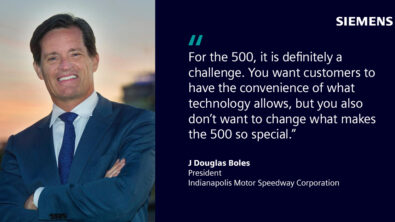Future Car Podcast with Ed Bernardon – Best of 2021
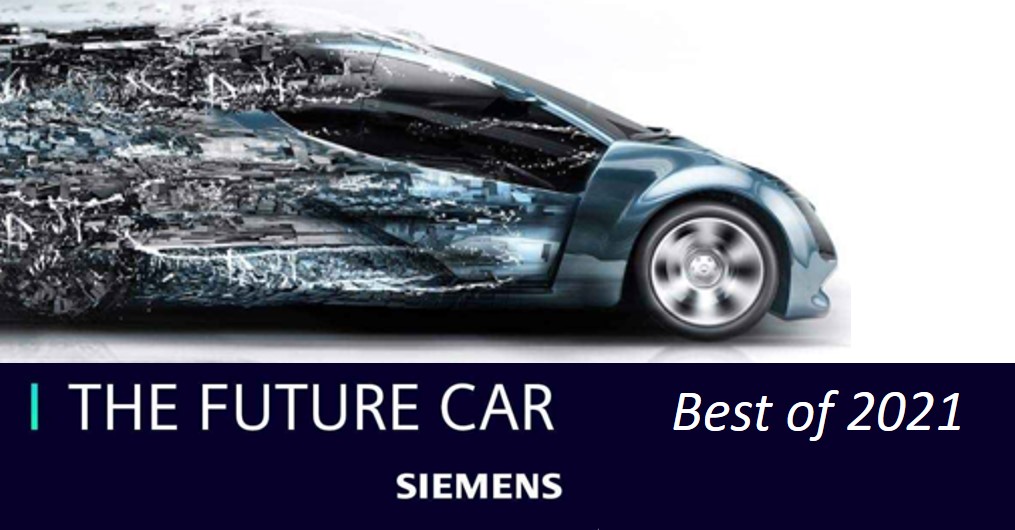
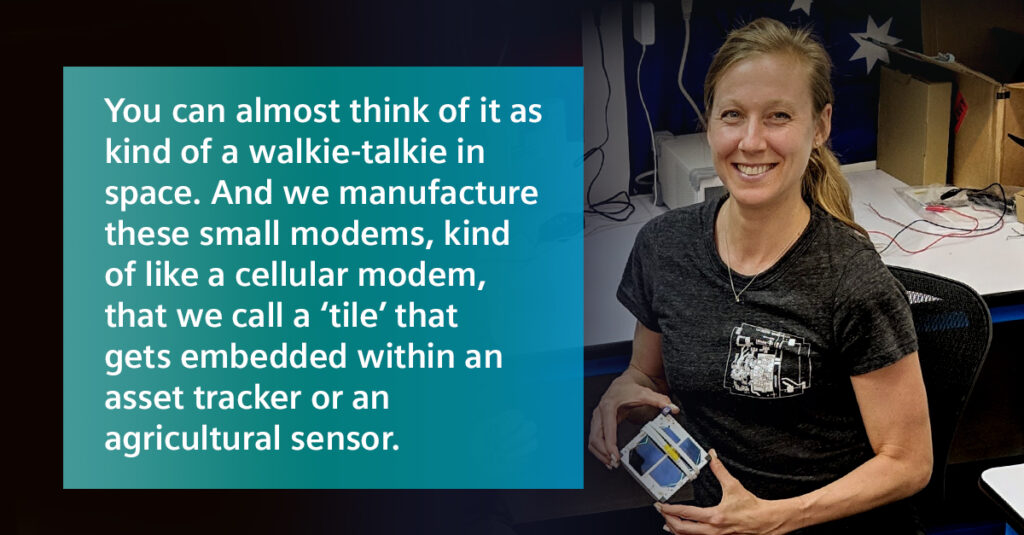
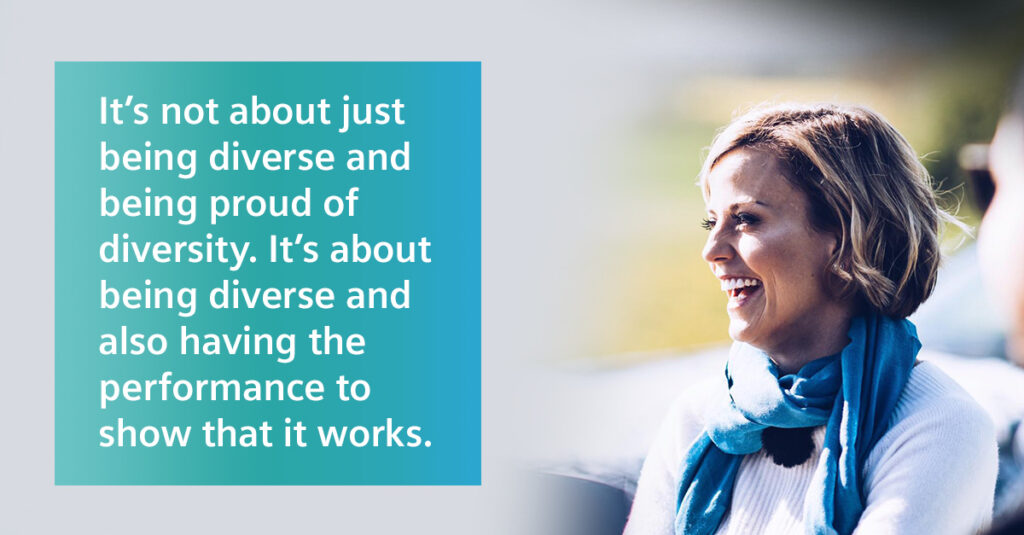
Last year, we had many guests from very diverse fields who helped us understand the innovations and efforts shaping the future of transportation.
This first episode of 2022 is different but equally awesome. You’ll get to hear two parts from the most listened-to podcasts of 2021 in the Women Driving the Future series. If you want to hear more, you can always check out the full episodes posted last year.
In this episode, we’ll start with Ed Bernardon interviewing Sara Spangelo, the Co-Founder and CEO of SWARM, a satellite company working to link the world through reliable, low-cost internet connectivity. She’ll share with us the impact that her company is having and will continue to have on the future of transportation.
And then we’ll hear part of his interview with Susie Wolff, Team Principal for ROKiT Venturi Racing. She has been a racing phenom since the age of 8 and earned her place in racing history as the first female driver in 22 years to participate at Formula One Race Weekend at the 2014 British Grand Prix. She’ll share with us her experiences as a race car driver and a Team Principal.
Some Questions I Ask:
(Sara Spangelo & Ed Bernardon)
- What made you decide to shape your company around the goal of affordable connectivity? (04:10)
- How will SWARM help in increasing the digitization of farming? (10:27)
- What role is SWARM going to play in future transportation? (14:07)
- What do you envision the future of transportation in space will be like? (17:42)
(Susie Wolff & Ed Bernardon)
- How did you get your first sponsor? (21:04)
- What is the most important thing that you learnt in racing? (24:30)
- Why is it that we need the ‘Girl on Track’ and the ‘Dare to be Different’ programs? (26:50)
- What’s the role of racing in the shift towards sustainable transportation? (27:48)
What You’ll Learn in this Episode:
(Sara Spangelo & Ed Bernardon)
- When Sara first caught the entrepreneurial bug (03:17)
- How SWARM creates affordable connectivity (05:47)
- Who SWARM’s target customers are and their value proposition (07:02)
- The future of the company beyond putting up the satellites (17:00)
(Susie Wolff & Ed Bernardon)
- How it was racing F1 champion Lewis Hamilton (21:36)
- Importance of good relationships within a racing team (23:35)
- The importance of gender diversity in F1 racing teams (25:31)
- How Formula E promotes electric vehicles (29:16)
Connect With Sara Spangelo:
Connect With Susie Wolff:
Connect with Ed Bernardon:
Ed Bernardon: It’s been a big couple of years for the transportation industry. We’re thinking of new ways to travel, billionaires are sending people into outer space and soon we may even be going across town in an air taxi. This year on The Future Car Podcast, we talked to a variety of guests and we showcased the leading ladies, the women that are driving the future. In this throwback episode, we venture back to two of our most listened to episodes of The Future Car, featuring Sara Spangelo of SWARM and Susie Wolff a Formula 1 driver and Team Principal for ROKiT Venturi Racing
INTRO MUSIC
Ed Bernardon: Welcome to the Future Car Podcast, I’m your host Ed Bernardon VP Strategic Automotive Initiatives at Siemens Digital Industry Software.In our special series this year, I wanted to showcase “Women Driving the Future,” except we weren’t always talking about wheels on the ground. In one of our most listened to episodes of 2021, CEO and founder of SWARM, Sara Spangelo and I had a fascinating talk about grilled cheese sandwiches well Just kidding, but that’s not completely off because SWARM developed an innovative grilled cheese sized affordable satellite that is bringing connectivity to some of the most remote corners of the planet. Here’s Sara…
Ed Bernardon: Was there a moment or someone that really inspired you?
Sara Spangelo: At a really high level, astronauts like Chris Hadfield, who’s a famous Canadian astronaut, I’ve seen growing up and I always thought that was very inspiring. I actually got to meet him last summer, which was mind-boggling. I sometimes email him and he actually answers, that’s pretty cool. And then I’d say, growing up, I also had more entrepreneurial examples. The woman that actually ran my dance school was an entrepreneur and a dancer, Shelly Sheer. I found her very inspiring in terms of her career path. She kind of decided, “I’m going to do this.” It was kind of crazy but she did it and she was very successful.
Ed Bernardon: At this point, you mentioned you were speaking with an astronaut that inspired you, did you think at that point, you might become an astronaut?
Sara Spangelo: No. I think you always know that that’s a really far off dream. I mean, everyone in the aero department in Michigan, everyone at JPL, and everyone at Google would say they’d love to do that. But I think everyone’s like, “Well, the chances are extremely slim that it would be me.” It sometimes drives us, educationally or professionally, to do certain things just because, “Oh, I could open up that door to potentially do that thing.” But I think, at least for me, I was thinking, my chances of this are basically zero. So, being more realistic and then you get more realistic or maybe jaded as you get a bit older.
Ed Bernardon: It seems that for you, you had your inspiration in grad school with the astronaut. But also, I bet that entrepreneurial spirit that you learn from your ballet instructor, those two must have come together at that point.
Sara Spangelo: I think so. It’s all in the background but I think that I, probably deep down, was always thinking, “Oh, I’d love to start something.” And I actually did start a party planning business when I was little, and I did like an arts and crafts program, and I babysit a lot. So, I was actually entrepreneurial when I was like, 11. I think it was probably in there but I think I didn’t think that I would have the opportunity or the skills to actually do it ever, so I never really voiced it. But I don’t know, one foot in front of the other, and over time you figure stuff out, we’re still figuring out a lot of stuff on SWARM.Sara Spangelo: It was, in 2016, looking at what a lot of new companies were focusing on, which was connectivity and recognizing that’s a big problem in our world, 90% of the surface area is not connected of the earth, which is crazy. And even, I live in Portola Valley, there are pockets where there’s zero cell connectivity, which is just crazy in our day and time.
Ed Bernardon: What’s that percentage in the United States, you think?
Sara Spangelo: It’s actually really tricky because there’s a lot of claims that highways and farm fields are connected but if you actually talk to the farmers or the logistics people, they’ll tell you that cells are actually very weak and often zero in those regions. We think that it’s probably something like 30% or 40% cause connectivity.
Sara Spangelo: You can almost think of it as a walkie-talkie in space. We manufacture these small modems, kind of like a cellular modem that we call a tile, that gets embedded within an asset tracker or an agricultural sensor. And then an antenna is attached and the antenna is relatively small, it’s just eight inches high, and that sends little messages, you could think of them as little tweets, to our little walkie talkie device, which is our satellite in space. And then messages get down-linked to ground stations on the ground and then connected to the internet. It’s really that simple.
Ed Bernardon: When you say small, what’s the size of a typical satellite and cost? What’s the cost and weight of a typical satellite versus a SWARM satellite?
Sara Spangelo: Typical is funny, but I think the typical satellites that are providing a similar service to SWARM are usually several 100 kilograms, or even of 1000 kilograms and are usually several million to put up to build and launch. And then a SWARM satellite is about 400 grams, about a thousand times smaller.
Ed Bernardon: On your website, it said, “For $5 a month, you get 750 data packets per device.” There are 200 bytes in a data packet, and so I did some calculations, I don’t know if I got it right or not, but that’s like 15 kilobytes per month or 500 bytes in a day. That’s not very much data but it must be valuable though.
Sara Spangelo: It’s about 150 kilobytes per device per month, divide by 30, that’s about five. You’re right, it’s not much data. But it’s enough data to be very valuable for many of our customers. And the reason being, right now they have these devices floating out, in the ocean or in an agriculture field, or on highways, and they have no idea where it is, its health and status, its temperature. It’s really valuable to know where the device is. We find a lot of different value propositions that SWARM provides but I think the biggest one is often replacing humans having to do something really annoying and time-consuming and potentially dirty and dangerous, like driving out, take and writing down the meter reading on every single electrical meter across the highway, or calling up every single trucker to ask, “Where are you?” And that can be someone’s full-time job can now be completely eliminated and they can have a much safer job and more pleasant job by being able to bring back these sensor readings basically automatically and having them load into a platform or a dashboard on the computer and eliminating a lot of the confusion, mistakes, and time and energy that’s required for humans to do those jobs today.
Ed Bernardon: 50 bytes of data could probably save your life; say, you’re lost in the woods, a plane crash, on a remote mountain, or who knows what it might be. It doesn’t take a lot of data to be very, very valuable, it seems like.
Sara Spangelo: Exactly. That’s really where our sweet spot is, it’s connecting places on earth that typically have had no other solutions, where the other solutions have been prohibitively expensive. I envision that someday SWARM will save lives. But it will also have a huge impact in things like monitoring where trucks are and how fuel-efficient they’re being, where food supplies are and how efficient their transfer is, or if the temperatures are appropriate, so preventing things like food spoilage and waste, preventing extra CO2 emissions, having better monitoring for fires, obviously, that’s a big thing here in California, if we could monitor where the fires occur, or in Australia, then we could have a better opportunity to fight them, and doing things like ocean and air monitoring to have a better idea of what’s going on with climate change in the environment – there’s a lot of other impacts we can have. One of my other favorites is tracking animals, being able to track endangered animals, whether that’s whales or other land-based creatures, there’s been several people approached us, wanting to stick devices onto these animals, just to track where they are and making sure that they’re healthy and they’re where they’re supposed to be to prevent any poaching or negative things that could happen to them. There’s a wide range of crazy applications for SWARM.
Ed Bernardon: When you think of a lack of connectivity, you generally think of rural populations. And in fact, you mentioned, again, on your website that farming is one of the least digitized supply chains. How is this going to help that?
Sara Spangelo: Several aspects of industrial agriculture are actually pretty advanced, they do a lot of sensing and a lot of automation, but there’s always connectivity challenges in these remote regions. Where I grew up, in Manitoba, in Canada, as soon as you go outside of Winnipeg, there’s basically no cell connectivity and there are farmlands for days and days and days across the prairies. Farmers were able to have sensors on their fields that could send back data autonomously to the internet into their dashboards. It could help them make informed decisions. Do I need to water? Is it time to bring in my crops, and other key insights about temperature, humidity, that helps them make smarter decisions about how to use limited resources? Here in California, there are some new regulations coming out about groundwater management, and having SWARM enabled devices that can let farmers know where water levels are, can be very informative to make them be able to make smart decisions about how to use water more effectively.
Ed Bernardon: When you launched your first satellites, how did you make a decision on what part of the globe you’re going to light up first with connectivity?
Sara Spangelo: Actually, the orbits that we select are really interesting, they’re called polar Sun-sync orbits. You can think of this as an orbital plane, or I think of it as a hula hoop, that’s around the outside of the earth. It actually stays fixed relative to the sun and it rotates around the sun as the Earth rotates around the sun, and the earth spins underneath of it. We actually didn’t need to pick a region because our orbits see every point on Earth, usually about four times a day, in a single orbital plane. We launch many satellites into that orbital plane and we have a trick that spreads them out relative to one another, kind of like a string of pearls – by doing that, we get this great coverage. And then we launch our satellites into different orbital planes, you think of it as two hula hoops that are locked 90 degrees from one another. That’s actually what we have right now, we have two different orbital planes from our two most recent launches. And then we’re going to fill in different orbital planes, until it looks like an orange with all the wedges cut out.
Ed Bernardon: You call these space bees in the spirit of SWARM. All of them are on the line, but poor little space bee number eight or nine, I think it was, was off to the side there. Is space bee number eight okay? Is everything going all right over there with that one?
Sara Spangelo: Space bees eight and nine are just in a different type of orbit, and unlike the polar orbit that I was describing that goes pulled a pole that stays like these lock tool hoops, it’s actually inclined at 45 degrees. So, think of if it was a dinner plate around the equator, and then it’s tilted up halfway, 45 degrees. Those are just in different orbits because those were experimental satellites. So, it didn’t matter so much what orbits we put them in.
Ed Bernardon: So, they’re okay. We don’t have to worry?
Sara Spangelo: They are okay, but thank you for checking on that.
Ed Bernardon: Now, do you ever feel like these are your little children and they are out there and you want to make sure that you check in on them a couple times a day?
Sara Spangelo: No, I think I have that may be association with some of my employees. The satellites, there certainly is a team that has that type of love, the people that built them and hand built every single one and hand tested them, they certainly check it on them. Now we have 45, so it’s a lot to keep track of.
Ed Bernardon: I want to ask you a little bit about what you do and its impact on transportation because we actually did meet the first time when you were in the Ford booth at CES, what role is SWARM going to play in the future of transportation?
Sara Spangelo: We have a really exciting partnership with Ford. They featured us in that booth, we’ve done some cool demos connecting Ford vehicles outside of cellular range with our satellites, just previous to that event, actually. There’s a few different ways that SWARM can help with transportation and logistics. For the Ford use case, they’re very interested in connecting vehicles that go outside of cellular range and have emergency situations where they would need to call home. I always think of when I was driving through snowstorms in Manitoba, from my grandparents place, which was an hour and a half outside of Winnipeg back home; if we’d gone off the road or something like that, there would have been no way to call home, there’s no cellular connectivity. So, imagine every vehicle or every Ford vehicle, having a SWARM button that you could hit, and it says, “SOS, send emergency vehicles to this location.” And of course, you have your GPS position that you can send. They’re very interested in that – connecting vehicles outside of cell range. And then they’re also interested in tracking vehicles throughout the logistics supply chain.
Ed Bernardon: How do you get to Antarctica? I mean, it’s not a direct flight from New York City.
Sara Spangelo: It’s definitely not a direct flight. We did fly direct to New Zealand and then we took a military plane from Christchurch in New Zealand, straight to the base. That was sponsored through the NSF, the National Science Foundation. It’s a very fascinating operation that keep McMurdo Station, which is funded by the NSF going year-round. There are flights in and out, I think there were 1,000 people there when we went. So, it’s quite a community and they do a great job of bringing food fresh food there and maintaining all the aircraft so that scientists can do some pretty amazing research out there on the ice shelfs with all of the penguins and crazy environments that you experience there.
Ed Bernardon: What do you do in your spare time there? So, you’re done setting up your station, what do you do for fun in Antarctica? Do you play with the penguins?
Sara Spangelo: We didn’t get too close to penguins, but they have a lot of activities you can do there. It’s a really interesting community, people definitely band together and there’s all sorts of things that you can participate in. So, I’m really into working out and they had three gyms, and there was even a group that did these insanity videos, which is this type of kind of crazy workout. So, I found my people and I worked out with these six people that did insanity on the ice shelf.
Ed Bernardon: Let’s talk about the future here. Once you’ve achieved your goal of lighting up the world, what comes next?
Sara Spangelo: Well, I mean, SWARM certainly wants to focus on our short term goals of putting up these 150 satellites. We also have aspirations of future constellations and other things that we might do. I’m also becoming very interested and feeling like we’re not doing enough around climate change. That’s something that I personally want to put a lot of effort into over lifetime. I think that’s something that segues probably nicely from some of the SWARM work. But it’s kind of a broad category that I’m particularly interested in exploring, maybe during or after SWARM.
Ed Bernardon: What do you envision for the future transportation in space? When do you think you can take that one-week trip on the SpaceX rocket? When’s that gonna happen?
Sara Spangelo: It’s a great question. I mean, the momentum that SpaceX and some of the other space players are exhibiting is very inspiring, and obviously very enabling for SWARM as well. I think probably in the next five to 10 years, we’ll be able to take that trip. People have already signed up for some of these opportunities for very expensive price points. But in my mind, if wealthy people are willing to fund these trips and it’s better for exploration, then I’m all for it. And it funds some of the R&D.
Ed Bernardon: When do you think we’re going to get to Mars? Do you think SWARM is going to help us get there?
Sara Spangelo: Oh, yeah. SWARM is definitely going to be be fueling the onternet of Mars, for sure. It just makes sense because we’re small, easy to deploy, low cost, all those things. It’s hard to say that something will go to Mars, JPL has successfully been sending things to Mars for a while. But I think maybe the start of a human type base might be in 10 years, and then maybe people on Mars in 20 years, so maybe by 2040. It’s a total wild guess.
Ed Bernardon: This is the last question, once SWARM achieves full global connectivity and a bit more bandwidth, do you think it might be possible that SWARM and the future car podcast can partner to deliver the first live podcast broadcast to reach all corners of the globe?
Sara Spangelo: I would love to support that. I think it’s gonna be a while until we can do voice, we can certainly tweet it if that’s what you’d like to do.
AUDIO TRANSITION MUSIC
Ed Bernardon: As we continue to look at the most listened to episodes of The Future Car Podcast, lets switch lanes in the Women Driving The Future Series and hear from Formula 1 Driver and Team Principal for the ROKiT Venturi Formula E team Susie Wolff. What I particularly enjoyed about speaking with one of the most accomplished woman in motorsports is the story she shared about driving a pink race car and what that meant to her. Her answer surprised me, and if you haven’t heard it, it may just do the same for you. Here’s Susie Wolff:
AUDIO TRANSITION MUSIC
Ed Bernardon: That moment, when your father gave you the option, it would have been easy to say, “Let’s just go home. They’re bumping me too much.”. But you didn’t. Can you remember back to that moment? Why was it because your father was pushing you was it that you wanted to get even with those people that were bumping you on the track? What was it? Susie Wolff: It’s interesting when I look back and your question also makes me think. I mean, now being a mother of a little boy, I think it was just in my character. I was very much the character that I wanted to get back out there and show what I was made of and I loved the competition. I was someone from a very young age that liked the competition. I wasn’t always a great loser, which was sometimes painful for my parents to cope with. But certainly that element of competition, I think that’s either in you or it’s not, it’s either part of your character, or it’s not. And certainly, I love the competition, I love the speed of the racing and that’s why my choice was to go back out there and try again.
Ed Bernardon: Getting that first sponsor though, has to be one of the hardest ones. And you mentioned that, as a successful racecar driver, you have to be successful behind the wheel, but also in getting sponsors. Did someone teach you how to do that? How did you get that first sponsor you needed to make sure you could keep your career going?
Susie Wolff: Well, I had mentioned before, my mum was such a great role model, but both my parents were, they run their own businesses, they’re very entrepreneurial. At the age of 12, I wrote to every F1 team in the paddock asking for work experience.
Ed Bernardon: In Formula Renault – speaking of being surrounded by great people in racing – you raced against Lewis Hamilton, and I think he won a particular race that you came in third. What was it like to be racing with him and having him inside there trying to take that win away from him?
Susie Wolff: Well, we raced from a very young age, and I can remember so vividly him as a little eight-year-old. He was outstanding from the very beginning, he was someone to look out for. And we really progressed through the ranks together. And in that one Formula Renault race, it was quite funny because he did win, I finished third, but I couldn’t get my champagne bottle open on the podium. So, he ended up having to open it, for me very gentlemanly. But it’s not a great surprise for me that he’s gone on to become I believe the best of his generation, if not the best of all time.
Susie Wolff: I have to be honest, at the time when Mercedes Benz told me I would be racing a pink car, I wasn’t very enamored.
Ed Bernardon: You didn’t look very happy, that’s for sure.
Susie Wolff: I certainly fought against that decision because I feel blonde, female racing driver and a pink racing car was such a cliche. But on the other side, they did it as a marketing exercise because they believed it would create a lot more attention. And they were right, that pink car, there were pictures of it everywhere because you don’t see many pink racing cars. And so, from that perspective, I had to understand that there was a bigger picture at play, it was a marketing exercise and it certainly worked. And there was that positive element that I saw a lot more little girls turning up to the racetrack, they were normally dressed head to toe and pink and they were there and their parents told me they were much more eager to come to the races because they saw this pink racing car and they were told it was driven by a girl.
Ed Bernardon: What surprised you the most when you got into the F1 car and you were on the track?
Susie Wolff: The sheer speed. The fact that downforce when hits you means you can carry an incredible amount of speed around the corners, and then the sheer speed of the car, it blows you away in your first run.
Ed Bernardon: When you jump out of the car – and this could be anything from a go-kart to a Formula One car – you have to communicate to the engineers and the people that are helping you – be it your dad or be it the engineers that surround a Formula One car – to help make that car better. Is that something you’d like to do? Do you find that challenging, but it is an important part of racing, correct?
Susie Wolff: A very important part of racing. And that’s if you want to go and have a big success, it’s a part that you need to be good at. It’s about forging relationships with the team, particularly your race engineer, making sure that you’re both speaking the same language, having full trust in each other, communicating well. And that’s a huge part of getting performance because as much as you try and drive as quickly as you can if the car’s not set up in the correct way, you’re never going to extract the maximum. So, those human relationships and that team efforts were hugely important.
Ed Bernardon: So, after a successful career in racing, you decide to move on. What’s the most important thing you learned in racing that applies to what you’re doing now?
Susie Wolff: That’s a very good question. I learned a lot, which I’ve carried on. What was the most important? I think it goes back to that tenacity, that feeling of taking the challenge on and simply not giving up because the team that I joined in Formula E and we had a lot of work to do initially to turn the team around, and there were certainly times where I felt out of my comfort zone where I had to learn quickly had to trust my gut feeling. But I have very much the mentality of “Bring it on, I’m up for the challenge.”, and that determination and that’s the sentiment of just never giving up is certainly very important in motorsport. And I think in all sports because sport is brutal. There’s only ever one winner and everyone wants to win, so you need to be able to cope with tough days, with failures, and pick yourself back up and come back stronger
Ed Bernardon: There’re many different roles in racing and I think one of the things you’re very proud of Venturi is the fact that in many of these roles you have a lot of women in many of these roles. And almost a third of your team, which is unique for Motorsports are actually women. Maybe you could tell us what are the different roles besides driving, and how is it that you got to the point where you have this unique percentage of one-third women on your team? How did that really come about?
Susie Wolff: It became about really because I’m someone who believes much more in action. Everyone can talk about how important diversity is everyone can support diversity, but who actually implements and makes it happen. And for us, at Venturi, obviously, with me being a female team principal and being passionate about the fact that I believe motorsport is an environment where women can be successful, I put my money where my mouth was. It’s not about just being diverse and being proud of diversity, it’s about being diverse, and also having the performance to show that it works. And I do think that motorsport is going through an organic change where there are much more successful women in the sport – not always behind the camera, and it’s in front of the camera visible to the wider audience – but there are more and more women in the sport and that’s something that’s very encouraging to see.
Ed Bernardon: Why is it that we need the girl on track and the dare to be different programs? Maybe you really just answered that question, but it sounds like without projects like that or programs like that, it may be difficult or certainly will take a lot longer for women to get into motorsports to the level that they should be.
Susie Wolff: Absolutely, I think it’s a number of issues. I think the first one it’s simply down to numbers. The talent pool is not big enough of women trying to enter the sport, whether that be as a racing driver, or in one of the professions around the sport. We just need more women competing and entering the sport for the best to rise to the top. And how do we increase that talent pool? I think it’s about inspiring the next generation with the Girls On Track initiative, we go out into schools, we do online events, we invite girls to racetracks. And then there’s the element of creating role models, showing these young girls that there are successful women in the sport and allowing them to be inspired by these role models.
Ed Bernardon: How do you see the role of racing and this shift towards a more sustainable world of transportation?
Susie Wolff: Racing, I think has that unique aspect what you develop, when a manufacturer develops in terms of its racing program can be very much utilized later on its road-going vehicles. And certainly, when I was first approached about formula E – I think three years ago now – I didn’t believe in the concept. I said electric racing cars, but of course, it was the future, it is the future and it’s happening now. EV technology isn’t yet mainstream, but it’s slowly but surely coming and I think it’s very exciting for me to be a part of Formula E to be at the cutting edge of that technology because racing cars are at the forefront of that research and development. And this huge shift that we see in the automotive industry, that’s something that doesn’t happen very often. And for me to be right in the middle of it and seeing internal combustion engines, slowly but surely heading for the exit and everything heading towards EV technology is not only fascinating but also from the perspective of sustainability, hugely rewarding. We race in city centers, we showcase the technology and why it’s better for the environment, why it’s more sustainable. So, it feels to me not just that I’m going racing, but I’m going racing with a purpose.
Ed Bernardon: Racing can make people more aware of the impact that EVs can have on sustainability. Is there anything you’re doing that’s special in this area to promote EVs in general in society?
Susie Wolff: Well, I think the fact that we bring race into the people, as opposed to people coming out to see us race. For many other championships, you need to travel out to a racetrack in order to see the cars racing, whereas we rock up into the city centers, we create new audiences and new fans because it’s people that don’t need to drive out to the racetrack and we can chance upon us racing in their city center, and we can also showcase the technology. And when Formula E puts on a race, we normally have something called an E village where every manufacturer or team gets to showcase let’s see their road-going version of an electric car. This means we’re opening the public’s eyes to EV technology. Because if you’re not someone that’s a huge car fan or racing fan, you may not even be aware of EV technology and Formula E. Whereas because we’re racing in city centers, we’re having that wider appeal, and we’re attracting a new and different audience, which I think is one of the most exciting parts of Formula E.
Ed Bernardon: Thank you for tuning in to the Future Car Podcast in our first official episode of 2022. I’m looking forward to sharing more on this podcast journey with you on our upcoming episodes with Marcus Welz of Hyundai and Nakul Duggal of Qualcomm. And hey, if you like the podcast, don’t forget to leave a review on your favorite podcast player. And connect with me, Ed Bernardon on LinkedIn. Catch you next time.
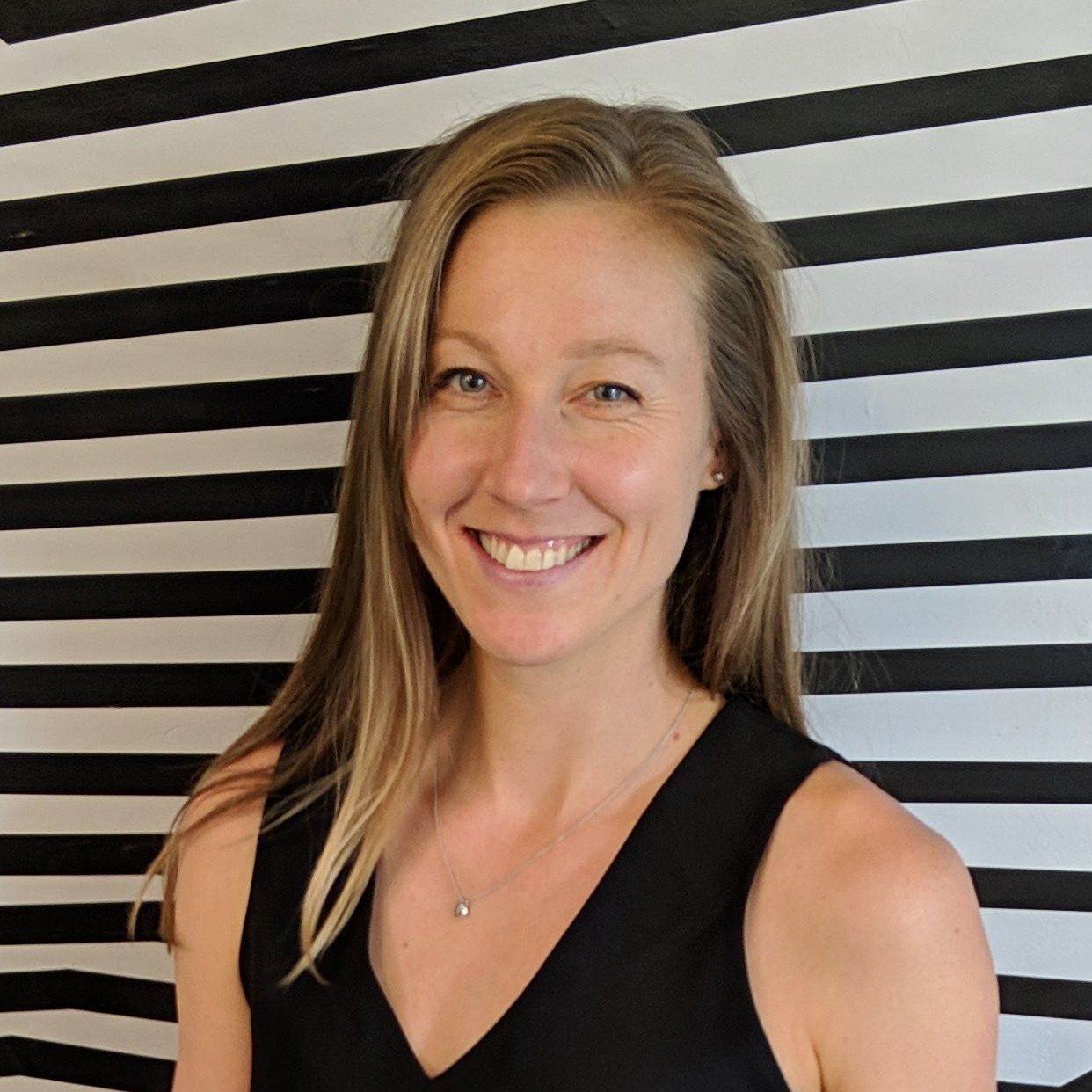
Sara Spangelo CEO SWARM – Guest
Dr. Sara Spangelo is the co-founder and CEO of Swarm, the company that is developing the world’s lowest-cost global communications network with breakthrough satellite technology and ground hardware for customers in remote locations. Before starting Swarm, Sara worked on small satellites and autonomous aircraft at the University of Michigan and was a lead systems engineer at both NASA’s Jet Propulsion Lab (JPL) and Google X. Her expertise is in modeling and optimizing satellite constellations to maximize impact and business opportunities. Sara holds a PhD in aerospace engineering from the University of Michigan and in 2017 was a Top 32 Canadian astronaut candidate.
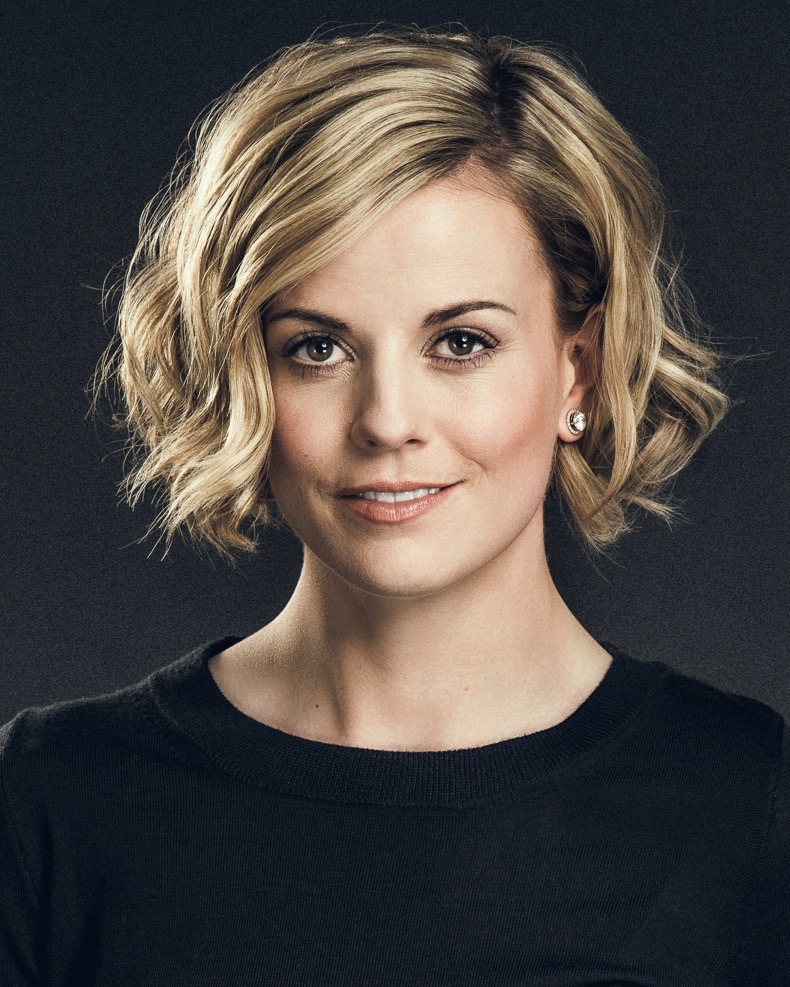
Susie Wolff, Team Principal ROKiT Venturi Racing – Guest
Susie began her competitive motorsport career on the karting track. After cutting her teeth in karting, Formula Renault and DTM for Mercedes-Benz, Susie went on to make history at the 2014 British Grand Prix by becoming the first woman to take part in a Formula 1 race weekend in 22 years. Following her retirement from driving in 2015 Susie launched Dare To Be Different, a call to action aimed squarely at driving female talent by inspiring the next generation and increasing female participation in all levels and aspects of motorsport. In 2018 Susie was appointed as Team Principal and a shareholder of VENTURI Formula E Team. Late in 2018 ‘Dare to be Different’ united with the FIA’s initiative, ‘Girls on Track’, creating one global outreach undertaking important grassroots work globally ensuring that girls and women of all ages are aware of the opportunities available to them.
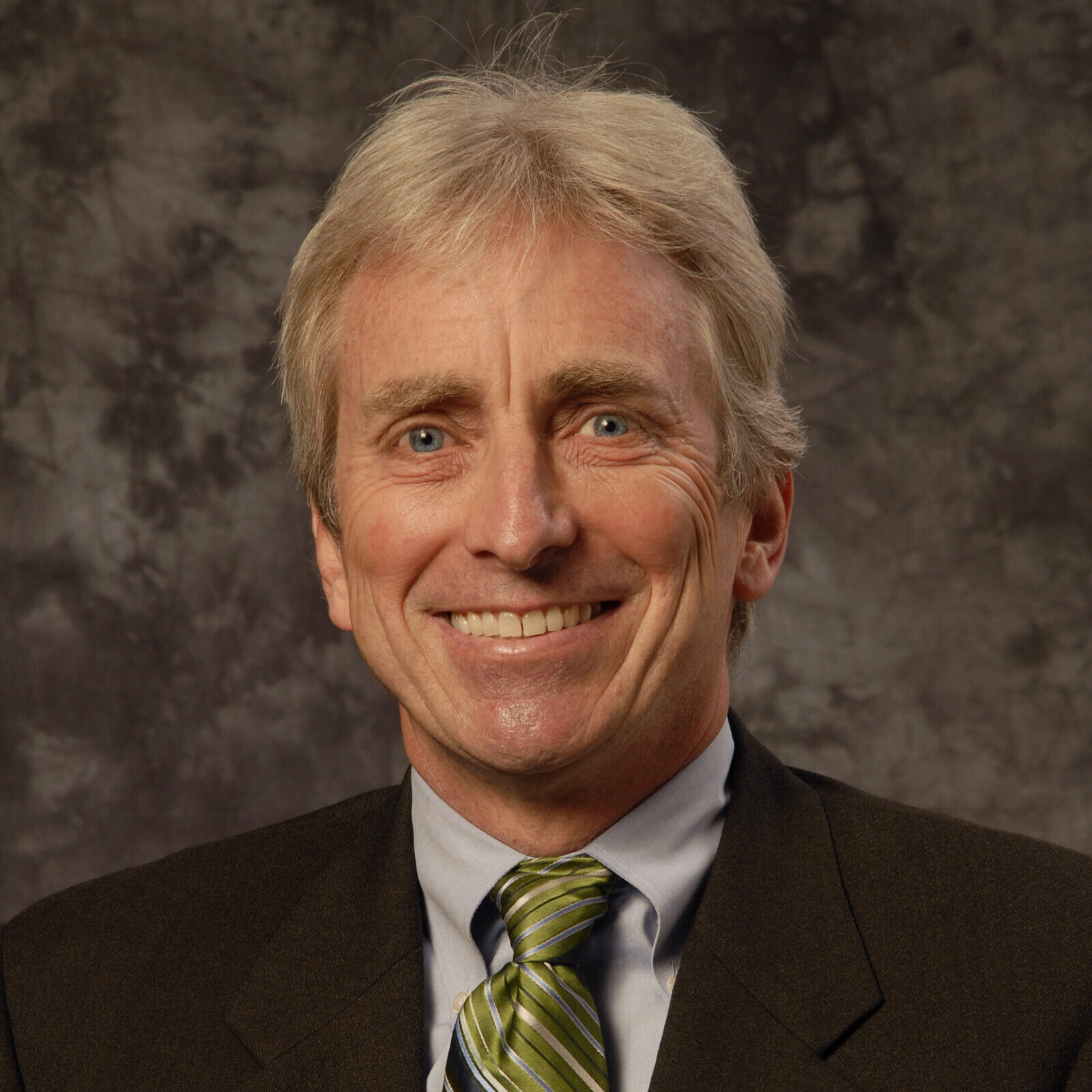
Ed Bernardon, Vice President Strategic Automotive Initiatives – Host
Ed is currently VP Strategic Automotive Initiatives at Siemens Digital Industries Software. Responsibilities include strategic planning and business development in areas of design of autonomous/connected vehicles, lightweight automotive structures and interiors. He is also responsible for Future Car thought leadership which includes hosting the Future Car Podcast and development of cross divisional projects. Previously he was a founding member of VISTAGY that developed light-weight structure and automotive interior design software acquired by Siemens in 2011, he previously directed the Automation and Design Technology Group at MIT Draper Laboratory. Ed holds an M.S. in mechanical engineering from MIT, B.S. in mechanical engineering from Purdue, and MBA from Butler.
If you like this Podcast, you might also like:
- Connecting the World with Byte-sized Satellites – Sara Spangelo CEO SWARM
- Susie Wolff, A Driving Force for Sustainability & Diversity, Team Principal ROKiT Venturi Racing
- Driving the Electric Car Revolution w/ Henrik Fisker of Fisker, Inc.

On the Move: A Siemens Automotive Podcast
The automotive and transportation industries are in the middle of a transformation in how vehicles are designed, made, and sold. Driven by an influx of new technologies, consumer demands, environmental pressures, and a changing workforce in factories and offices, automotive companies are pushing to reinvent fundamental aspects of their businesses. This includes developing more advanced and capable vehicles, identifying new revenue sources, improving customer experiences, and changing the ways in which features and functionality are built into vehicles.
Welcome to On the Move, a podcast from Siemens Digital Industries Software that will dive into the acceleration of mobility innovation amid unprecedented change in the automotive and transportation industries. Join hosts Nand Kochhar, VP of Automotive and Transportation, and Conor Peick, Automotive and Transportation Writer, as they dive into the shifting automotive landscape with expert guests from Siemens and around the industry. Tune in to learn about modern automotive design and engineering challenges, how software and electronics have grown in use and importance, and where the industries might be heading in the future.


